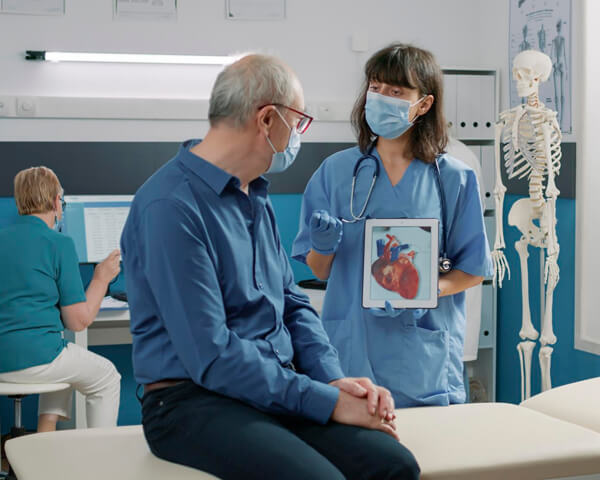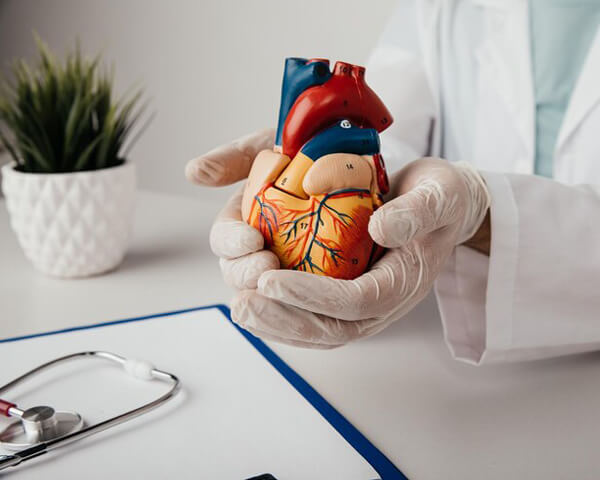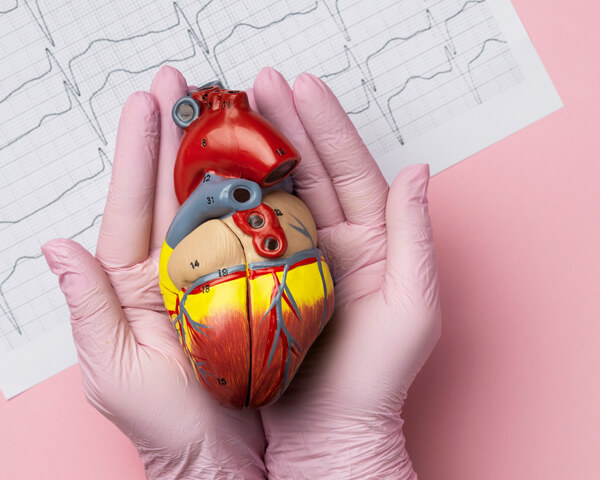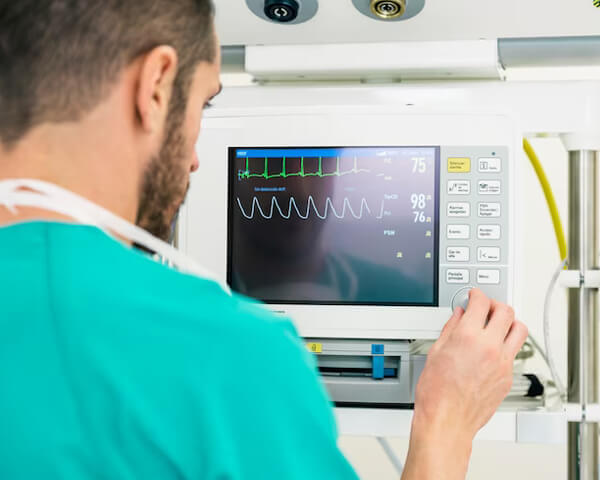Procedures
Coronary Angiogram
The purpose of a coronary angiogram is to detect narrowing or blockages in the coronary arteries, assess the severity of coronary artery disease and determine the best treatment plan for the disease.
The procedure is performed in a cardiac catheterization laboratory (a cath lab) usually located within a hospital. It takes about 30 minutes to an hour. Often you can go home n the same day.
A thin, flexible tube called a catheter is inserted into an artery usually in the arm or groin. The catheter is then threaded through the blood vessels to the heart. A contrast dye is injected through the catheter, which makes the coronary arteries visible on X-rays.
Images from the angiogram are then used to assess the condition of the coronary arteries and determine how much blood is flowing to the affected area. A treatment plan for the coronary artery disease can then be formulated. This could include continuing with medicines, doing more tests either invasively or non-invasively to further define the severity of the disease, proceeding onto coronary angioplasty and stenting or having surgery.
Coronary angioplasty and stenting
It begins with inserting a guiding catheter in the same method as a coronary angiogram. A thin guide wire is then threaded into the coronary artery being treated. A small balloon attached at the end of a long wire is then advanced to the site of the blockage. The balloon is inflated within the blockage, which widens the artery. A stent, a small metal mesh tube, may then be inserted into the artery to keep it open.
Coronary angiography, coronary angioplasty and stenting are relatively safe procedures. However, there are some risks associated with it, such as bleeding and infection. Uncommonly a stroke, heart attack or heart arrhythmia can occur during the procedure. There is a small risk that you can have an allergic reaction to the contrast dye or suffer kidney damage from the dye.
DC Cardioversion
An elective DC cardioversion is usually performed in a hospital or other healthcare setting. The patient will be heavily sedated and electrodes will be placed on the chest. A machine called a defibrillator will be used to deliver the electric shock.
DC cardioversion is a relatively safe procedure with a small risk of developing new arrhythmia immediately after the shock.
The procedure usually only takes about 10 minutes. It is common that you would be able to go home on the same day.
Right heart catheter
A Right heart catheter is performed to diagnose heart conditionssuch as heart failure, pulmonary hypertension, and congenital heart defects. Sometimes it is used to monitor the severity of certain heart conditions and can guide treatment decisions. It usually takes about 30 minutes.
Right heart catheterization is usually performed in a cardiac catheterization laboratory (cath lab). A thin, flexible tube called a catheter is inserted into a vein in the groin, arm, or neck. The catheter is then threaded through the blood vessels to the right side of the heart.
The catheter has a number of sensors that measure the pressure and blood flow in the right side of the heart. The doctor can also use the catheter to measure the oxygen levels in the blood and measure the resistance to blood flow from the heart to the lungs.
Right heart catheterization is a relatively safe procedure. However, there are some risks associated with it, such as bleeding and infection, injury to the right side of the heart, and being allergic to the contrast dye.
Endomyocardial biopsy
EMB is performed in a cardiac catheterization laboratory (cath lab). A thin, flexible tube called a catheter is inserted into a vein in the groin, arm, or neck. The catheter is then threaded through the blood vessels to the heart.
A small device shaped like a small pair of scooped scissors called a bioptome, is attached to the end of the catheter. The bioptome is inserted into the right sided heart chamber. It is used to remove a small piece of heart tissue usually from the septum of the heart (the muscle dividing the left and right side of the heart). The tissue sample is then sent to a pathologist for examination.
EMB is a relatively safe procedure. However, there are some risks associated with it, such as bleeding or infection and perforation of the heart wall which may require surgical repair.
Implantable Loop recorder
An implantable loop recorder (ILR) is a small device about the size of a matchbox that is implanted just underneath the skin, over the chest in front of the heart to monitor your heart’s electrical activity. It is used to diagnose arrhythmias and cardiac conduction problems. It takes about 30 minutes to put in. The procedure is done under a local anaesthetic with sedation.
It can detect arrhythmias that may not have been picked up by other tests, such as an electrocardiogram (ECG) or a short duration Holter monitor.
The ILR can record up to three years of data. When the device is full, the data is automatically uploaded to a computer for analysis.
Inserting an ILR is a very safe procedure.The risks associated this are mainly in relation to infection and bleeding at the insertion site. Uncommonly, a loop recorder can malfunction.






